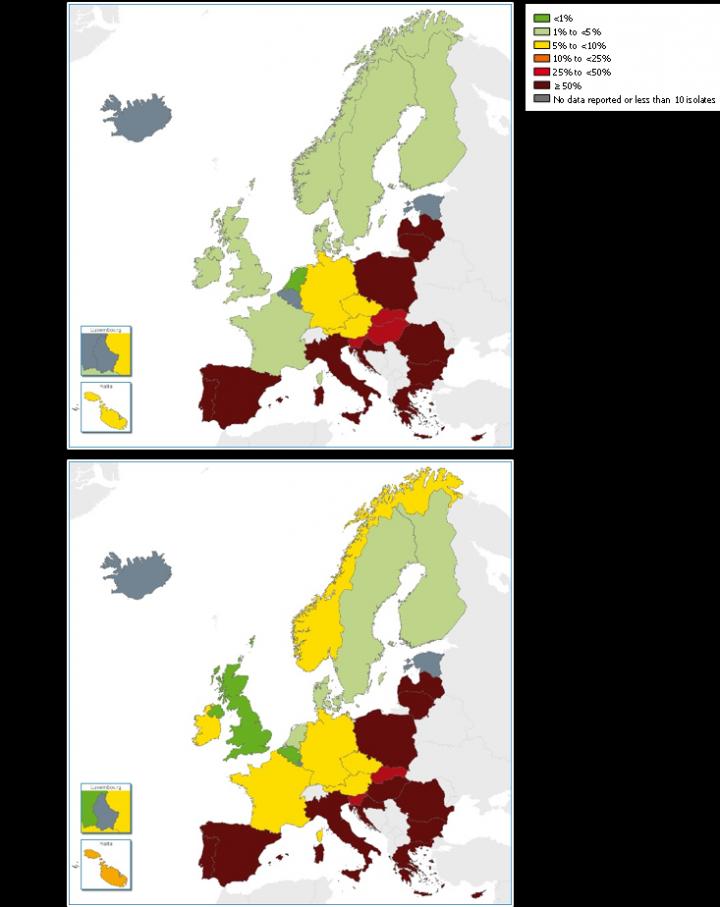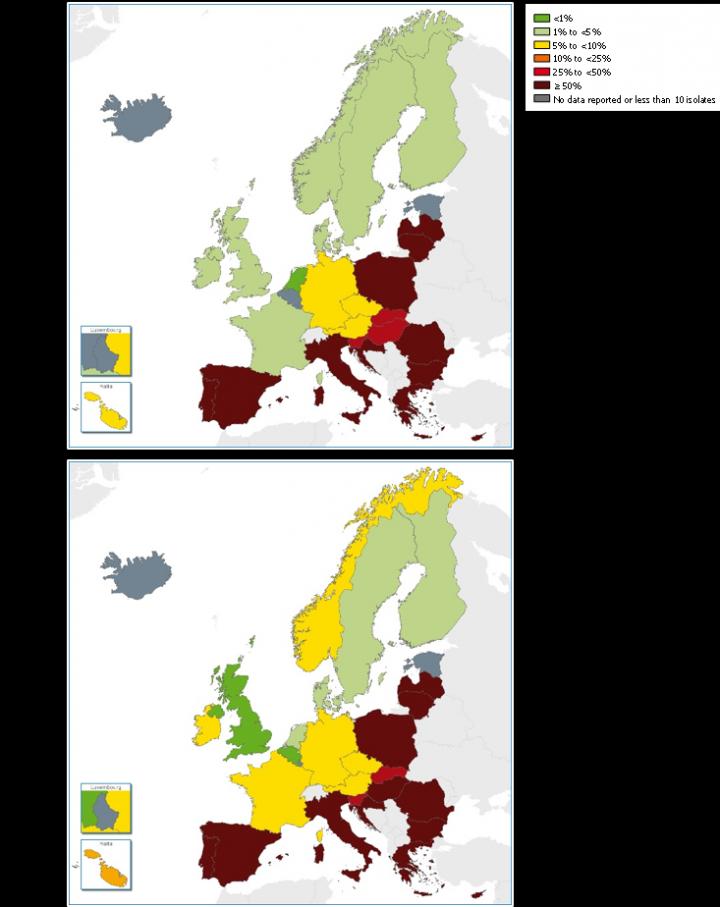
Credit: European Centre for Disease Prevention and Control
Acinetobacter baumannii is the cause of difficult-to-treat infections in healthcare settings in Europe due to its increasing resistance to antimicrobial agents, in particular the carbapenems. Outbreaks of carbapenem-resistant A. baumannii in healthcare facilities have been reported in Europe and worldwide.
Infections with carbapenem-resistant A. baumannii occur in patients with severe underlying diseases, mainly in intensive care units, and are often related to invasive procedures or indwelling devices. However, such infections are increasingly being reported in patients admitted to conventional medical and surgical wards. A. baumannii is difficult to eradicate once it has become endemic.
Recent ECDC data from the European survey on carbapenemase-producing Enterobacteriaceae (EuSCAPE) project and from the European Antimicrobial Resistance Surveillance Network (EARS-Net) confirmed that although there is already a high resistance baseline in some countries, there has been an overall increase of carbapenem-resistant A. baumannii in Europe.
These data confirm an already alarming situation that continues to worsen in many EU/EEA countries. While carbapenems traditionally were the antibiotics of choice for treatment of A. baumannii infections, resistance to these drugs has led to increased use of colistin as last-line treatment. Although still rare, resistance to colistin in A. baumannii is also increasingly being reported in Europe.
ECDC's risk assessment highlights the need of increased efforts to face this significant threat to patients and healthcare systems in all EU/EEA countries and outlines options to reduce risks through clinical management, prevention of transmission in hospitals and other healthcare settings, prevention of cross-border transmission, and improvement of preparedness of EU/EEA countries.
###
Rapid risk assessment: carbapenem-resistant Acinetobacter baumannii in healthcare settings
Summary of the latest data on antibiotic resistance in the European Union, EARS-Net surveillance data
ECDC Surveillance Atlas of Infectious Diseases
Carbapenemase-producing Enterobacteriaceae in Europe: assessment by national experts from 38 countries, May 2015
European Antimicrobial Resistance Surveillance Network (EARS-Net)
European Surveillance of Antimicrobial Consumption Network (ESAC-Net)
ECDC Antimicrobial Resistance and Healthcare-associated Infections Programme
Media Contact
ECDC press office
[email protected]
46-858-601-678
@ECDC_EU
http://ecdc.europa.eu





